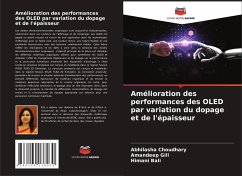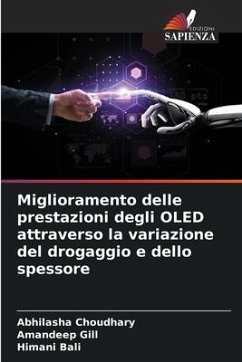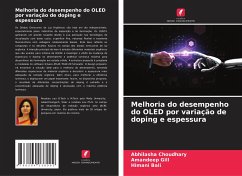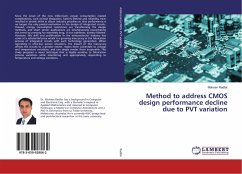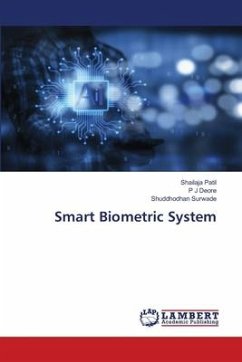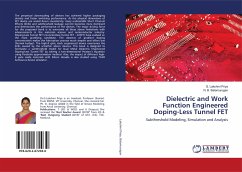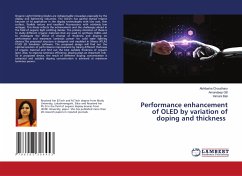
Performance enhancement of OLED by variation of doping and thickness
Versandkostenfrei!
Versandfertig in 6-10 Tagen
36,99 €
inkl. MwSt.

PAYBACK Punkte
18 °P sammeln!
Organic Light Emitting Diodes are indispensable nowadays especially by the display and lightening industries. The OLED's has gained myriad respect because of its application in the display technologies with low cost, thin surface, flexible nature and excellent fluorescence with relatively low voltages. This thesis reflects the achievements and the challenges ahead in the field of organic light emitting diodes. The primary intention of thesis is to study different organic materials that are used to synthesis OLEDs and to investigate the effect of change of thickness and doping on performance an...
Organic Light Emitting Diodes are indispensable nowadays especially by the display and lightening industries. The OLED's has gained myriad respect because of its application in the display technologies with low cost, thin surface, flexible nature and excellent fluorescence with relatively low voltages. This thesis reflects the achievements and the challenges ahead in the field of organic light emitting diodes. The primary intention of thesis is to study different organic materials that are used to synthesis OLEDs and to investigate the effect of change of thickness and doping on performance and maximum luminous power for solid state lighting devices.The proposed structure is designed and modeled in Silvaco ATLAS TCAD 2D Simulator software. The proposed design will find out the optimal solution of performance improvement by taking different thickness of organic material and find out the best suitable thickness of organic layer. Also, to improve luminous efficiency, doping plays animportant role. So in proposed device, the result of different doping concentration is extracted and suitable doping concentration is achieved at maximum luminous power.



